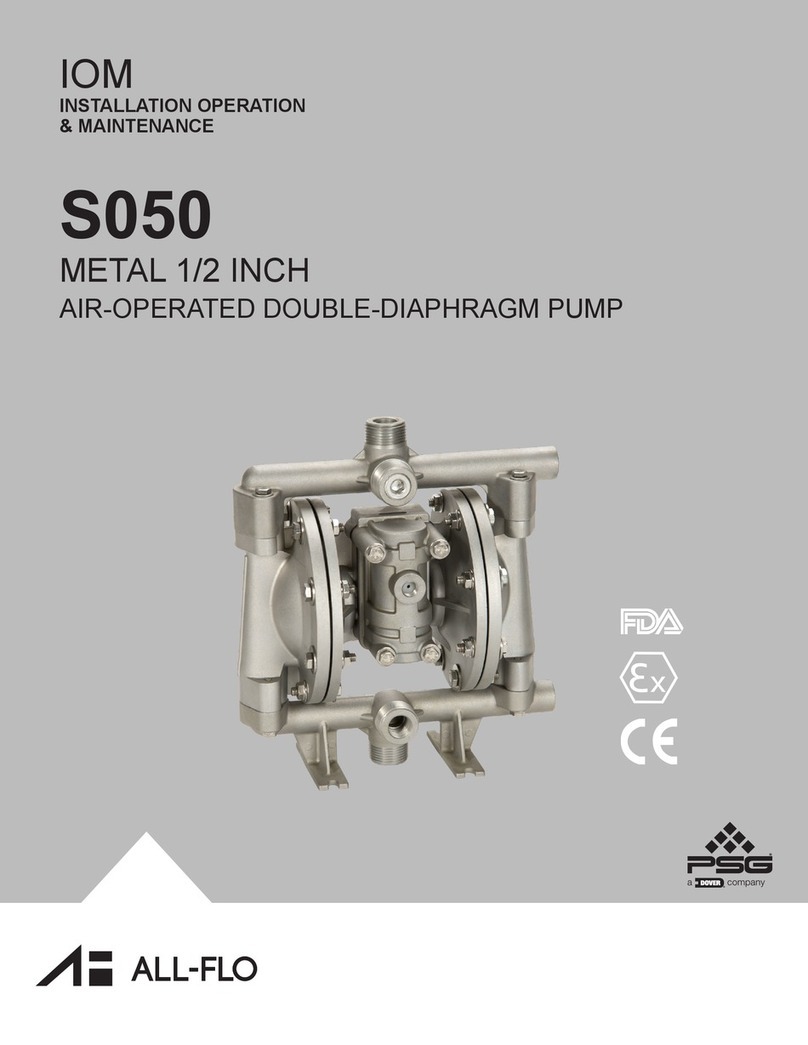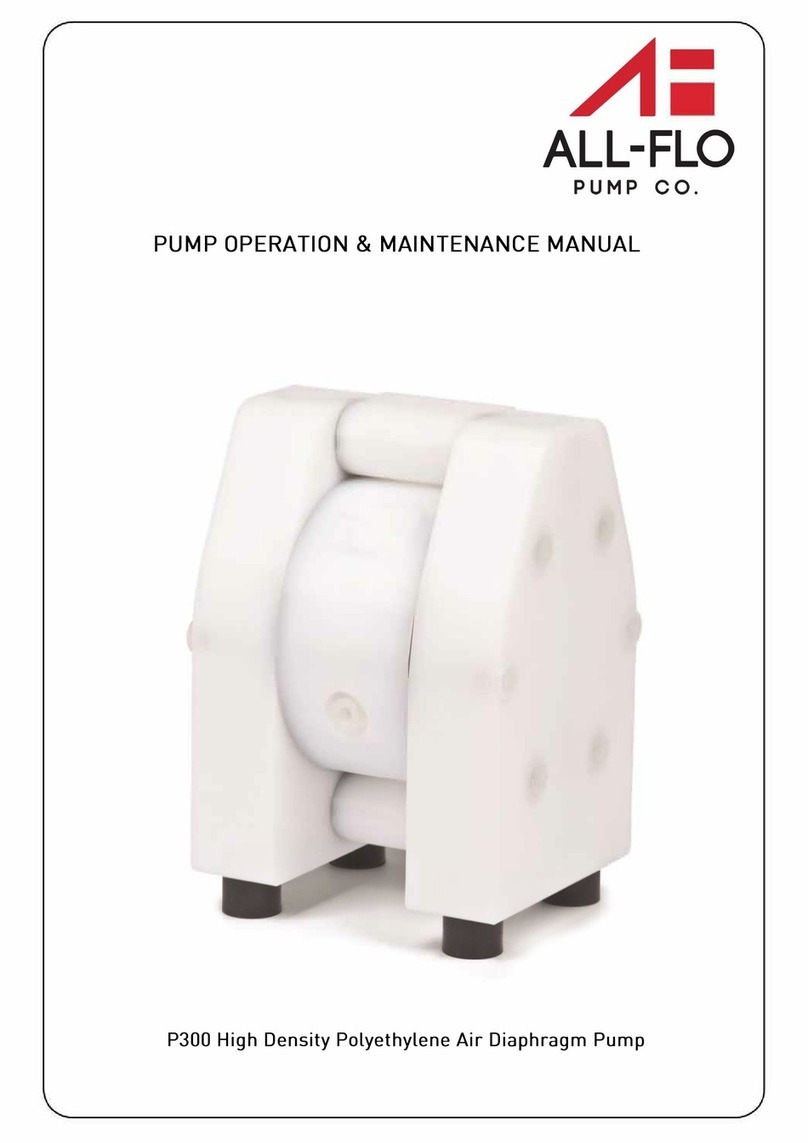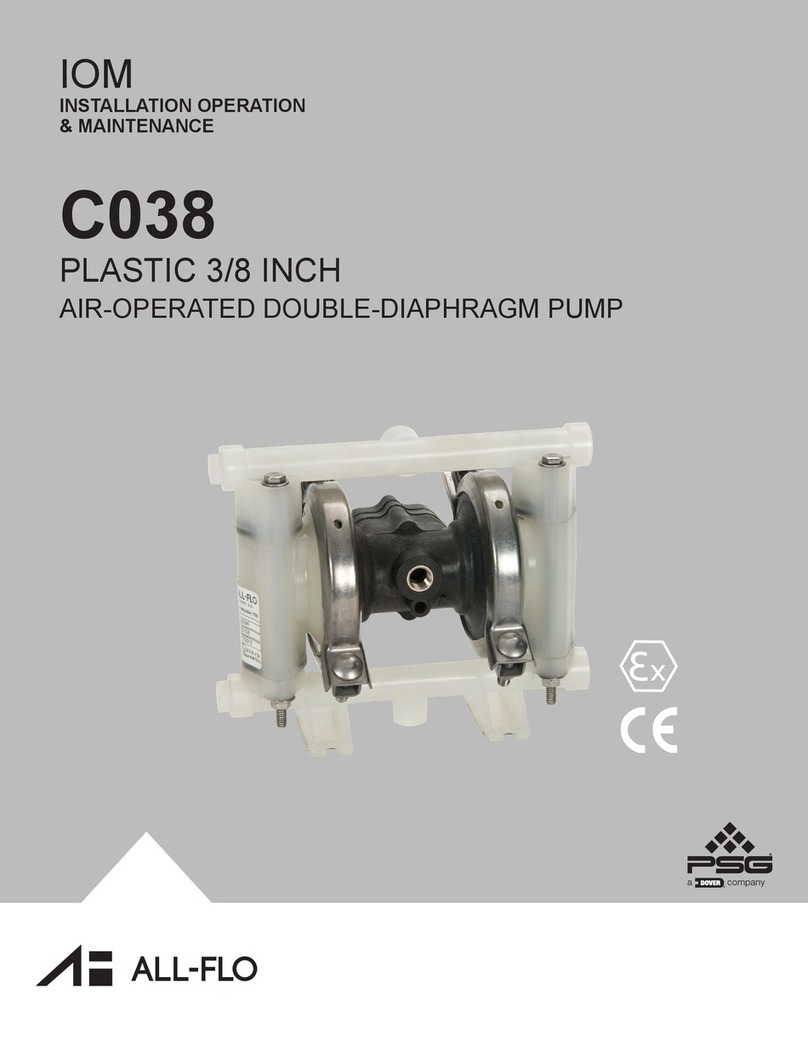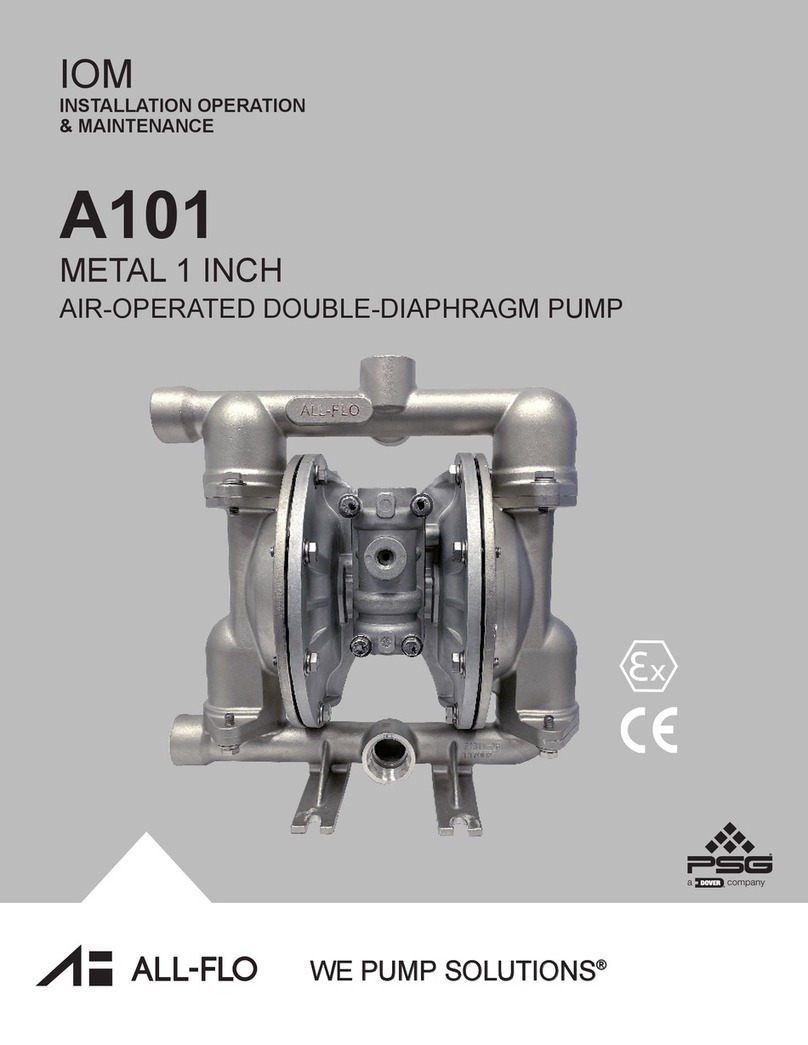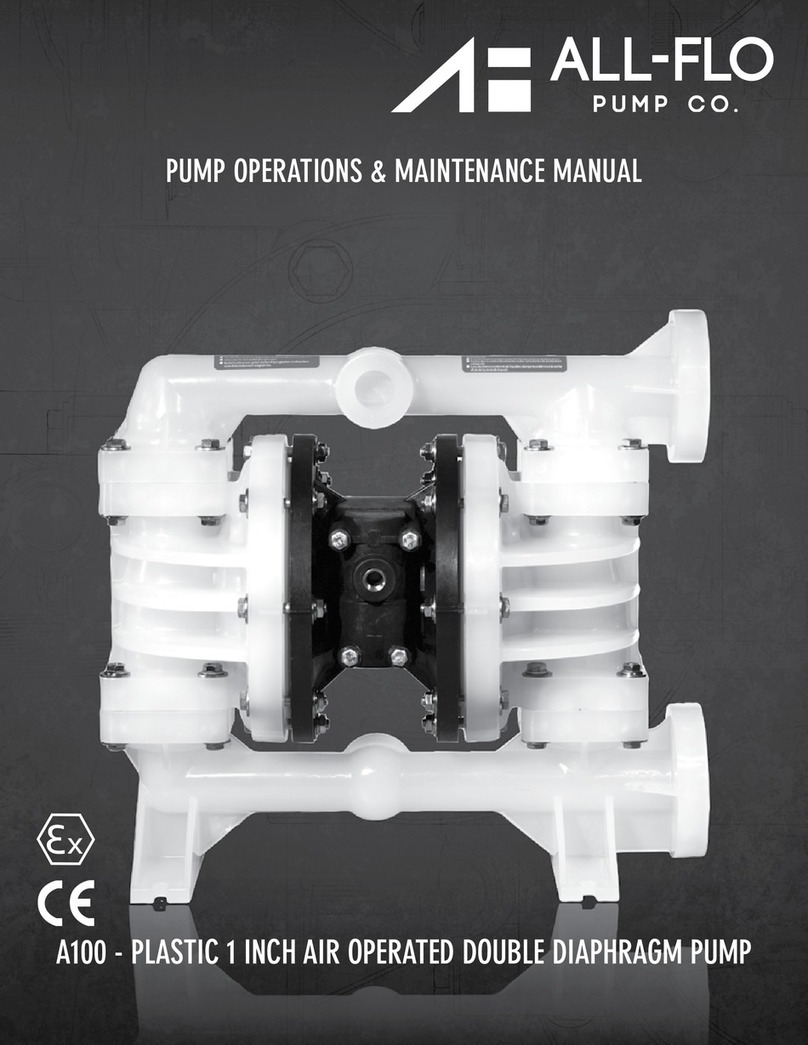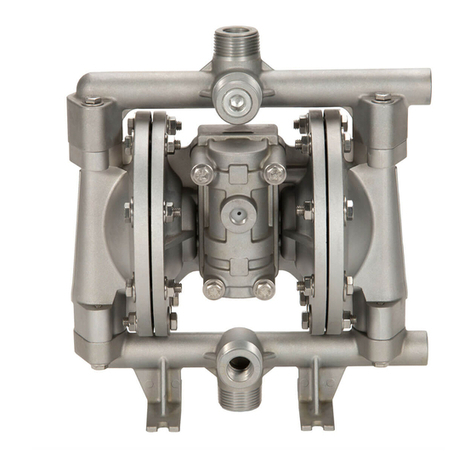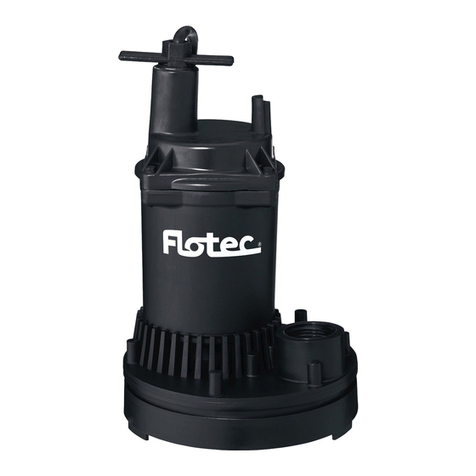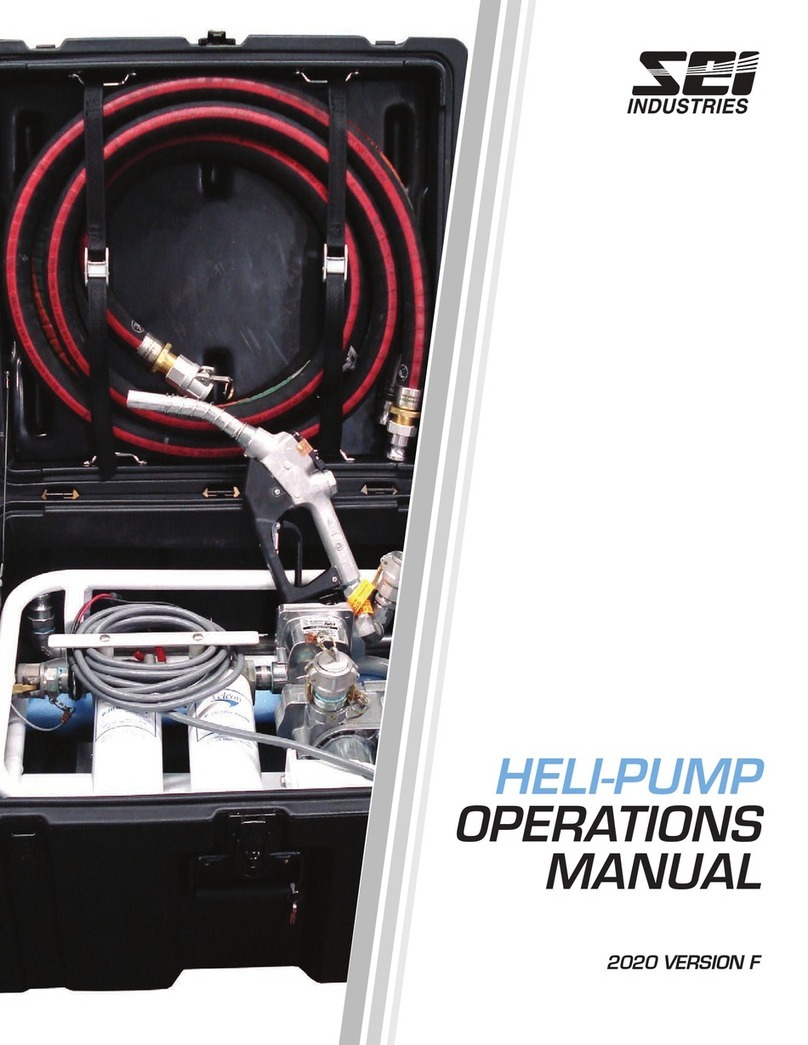All-Flo A100 Manual

all-o.com
A100 - 1 INCH AIR OPERATED DOUBLE DIAPHRAGM PUMP
PUMP OPERATIONS & MAINTENANCE MANUAL

all-o.com
TABLE OF
CONTENTS
2
SECTION 1 WARNINGS, DANGERS AND CAUTIONS 3
SECTION 2 MODEL DESIGNATION MATRIX 4-5
SECTION 3 PRINCIPLES OF OPERATION 6
SECTION 4 DIMENSIONAL DRAWINGS 7
SECTION 5 PERFORMANCE CURVES
RUBBER, TPE AND PTFE DIAPHRAGMS...........................8
SECTION 6 INSTALLATION,
INSTALLATION .................................................................................... 9-10
TROUBLESHOOTING ...................................................................11
OPERATION.....................................................................................12
MAINTENANCE ............................................................................12
SECTION 7 REPAIR AND ASSEMBLY
PUMP WET END REMOVAL............................................ 13-14
AIR VALVE REMOVAL ........................................................ 15-16
PILOT VALVE REMOVAL...................................................17-18
TORQUE SPECIFICATIONS.......................................................18
SECTION 8 EXPLODED VIEWS AND PARTS LISTS 19-24
ALUMINUM AND STAINLESS ..................................................
STEEL (NON-PTFE DIAPHRAGMS) ............................ 19-21
ALUMINUM AND STAINLESS ..............................................
STEEL (PTFE DIAPHRAGMS)....................................... 22-24
SECTION 9 ELASTOMERS AND REPAIR KITS 25
SECTION 10 WARRANTY AND REGISTRATION 26

all-o.com 3
READ THESE WARNINGS AND SAFETY PRECAU-
TIONS PRIOR TO INSTALLATION OR OPERATION.
FAILURE TO COMPLY WITH THESE INSTRUCTIONS
COULD RESULT IN PERSONAL INJURY AND OR
PROPERTY DAMAGE. RETAIN THESE INSTRUCTIONS
FOR FUTURE REFERENCE.
WARNING Pump, valves and all containers
must be properly grounded prior to handling
flammable fluids and/or whenever static electricity
is a hazard.
WARNING Prior to servicing the pump,
ensure that the air and fluid lines are closed and
disconnected. While wearing personal protective
equipment, flush, drain and process liquid from the
pump in a safe manner.
CAUTION Do not connect a compressed air
source to the exhaust port of the pump.
CAUTION Ensure that the muffler is properly
installed prior to pump operation.
CAUTION Do not lubricate air supply.
CAUTION When selecting pump materials, be
aware of the following temperature limitations:
Buna-N (Nitrile): 10°F to 180°F (-12C to 82C)
Geolast®: 10°F to 180°F (-12C to 82C)
EPDM: -40°F to 280°F (-40C to 138C)
Santoprene®: -40°F to 225°F (-40C to 107C)
Viton®(FKM): -40°F to 350°F (-40C to 177C)
PTFE: 40°F to 220°F (4C to 104C)
Polyethylene: 32°F to 158°F (0C to 70C)
Polypropylene: 32°F to 180°F (0C to 82C)
PVDF: 0°F to 250°F (-18C to 181C)
Nylon: 0°F to 200°F (-18C to 93C)
Temperature limits are solely based upon
mechanical stress and certain chemicals will reduce
the maximum operating temperature. Consult a
chemical resistance guide for chemical compatibility
and a more precise safe temperature limit. Always
use minimum air pressure when pumping at elevated
temperatures.
CAUTIONS — READ FIRST!
WARNING
CAUTION
= Hazards or unsafe practices
which could result in severe
personal injury, death or
substantial property damage
= Hazards or unsafe practices
which could result in minor
personal injury, product or
property damage.
CAUTION Do not exceed 120 psig (8.3 bar)
air-inlet pressure.
CAUTION Ensure all wetted components are
chemically compatible with the process fluid and the
cleaning fluid.
CAUTION Ensure pump is thoroughly cleaned
and flushed prior to installation into a process line.
CAUTION Always wear Personal Protective
Equipment (PPE) when operating pump.
CAUTION Close and disconnect all
compressed air and bleed all air from the pump
prior to service. Remove all process fluid in a safe
manner prior to service.
CAUTION Blow out all compressed air
lines in order to remove any debris, prior to
pump installation.
CAUTION Ensure air exhaust is piped to
atmosphere prior to a submerged installation.
CAUTION Ensure all hardware is set to
correct torque values prior to operation.
SECTION 1

all-o.com
MODEL DESIGNATION MATRIX - ALUMINUM
SECTION 2
4
PRODUCT SERIES
FLUID CONNECTION TYPE
FLUID CHAMBERS/
MANIFOLDS
DIAPHRAGM
VALVE/BALL
VALVE SEAT
O-RINGS
SPECIAL (OTHER)
PORTING
INTERMEDIATE/
INNER CHAMBER
SPECIAL (HARDWARE,
MUFFLER, LUG)
A 1 0 0 -1 2 3- 4 5 6 7 - 8 9 10
FLUID CONNECTION TYPE
N = NPT
B = BSPT
INTERMEDIATE / INNER CHAMBER
A = Aluminum
FLUID CHAMBER / MANIFOLDS
A = Aluminum
DIAPHRAGMS
G = Geolast®
S = Santoprene®
T = PTFE with Santoprene® Backup
E = EPDM
N = Buna – N
V = Viton®/FKM
VALVE/BALL
G = Geolast®
S = Santoprene®
T = PTFE
E = EPDM
N = Buna – N
V = Viton®/FKM
3 = Stainless Steel
VALVE SEAT
P = Polypropylene
Y = Nylon
A = Aluminum
3 = Stainless Steel
O-RINGS
E = EPFM
N = Buna-N
T = PTFE
V = Viton®/FKM
PORTING
0 = Standard (Suction Center Front/Discharge
Center Rear)
A = Suction Center Front / Discharge Center Front
D = Suction Center Front / Discharge Right
E = Suction Center Front / Discharge Left
F = Suction Center Rear / Discharge Center Front
G = Suction Center Rear / Discharge Center Rear
I = Suction Center Rear / Discharge Right
J = Suction Center Rear / Discharge Left
P = Suction Right / Discharge Center Front
Q = Suction Right / Discharge Center Rear
S = Suction Right / Discharge Right
T = Suction Right / Discharge Left
U = Suction Left / Discharge Center Front
V = Suction Left / Discharge Center Rear
X = Suction Left / Discharge Right
Y = Suction Left / Discharge Left
1 = Dual Suction
2 = Dual Suction / Dual Discharge
3 = Dual Discharge
4 = All Ports Open (Standard ports will be left
un-plugged)
SPECIAL OPTION (HARDWARE, MUFFLER, LUG)
0 = Standard (Zinc Plated Steel Hardware, Plastic
Muffler)
4 = Zinc Plated Steel Hardware, Metal Muffler
7= Stainless Steel Hardware, Plastic Muffler
8 = Stainless Steel Hardware, Metal Muffler
B = PTFE Coated Stainless Steel Hardware,
Plastic Muffler
C = PTFE Coated Stainless Steel Hardware,
Metal Muffler
D = Zinc Plated Steel Hardware, Plastic Muffler,
Grounding Lug Installed
E = Zinc Plated Steel Hardware, Metal Muffler,
Grounding Lug Installed
F = Stainless Steel Hardware, Plastic Muffler,
Grounding Lug Installed
G = Stainless Steel Hardware, Metal Muffler,
Grounding Lug Installed
H = PTFE Coated Stainless Steel Hardware,
Plastic Muffler, Grounding Lug Installed
I = PTFE Coated Stainless Steel Hardware,
Metal Muffler, Grounding Lug Installed
SPECIAL OPTION (OTHER)
0 = Standard (None)
1 = Cycle Counter Valve
A = Grease Free (No Lubrication Assembly)
SIZE
WET END REPAIR KIT
Wet end kits are available and
consist of diaphragms, (back-up
diaphragms if required), balls,
seats and seat O-rings.
See matrix below.
1
2
6
7
8
9
10
INTERMEDIATE / INNER CHAMBER
A = Aluminum
Bold indicates recommended options
AIR END REPAIR KIT
Air end repair kit contains pilot
sleeve assembly and main air valve.
DIAPHRAGM
VALVE/BALL
VALVE SEAT
O-RINGS
AWE-100-4567
PRODUCT
SERIES
WET END
REPAIR KIT
PUMP SIZE
MATERIAL
AAK-100-2
PRODUCT
SERIES
PUMP SIZE
AIR END
REPAIR KIT
3
4
5

all-o.com 5
MODEL DESIGNATION MATRIX - STAINLESS STEEL
Bold indicates recommended options
PRODUCT SERIES
FLUID CONNECTION TYPE
FLUID CHAMBERS/
MANIFOLDS
DIAPHRAGM
VALVE/BALL
VALVE SEAT
O-RINGS
SPECIAL (OTHER)
PORTING
INTERMEDIATE/
INNER CHAMBER
SPECIAL (HARDWARE,
MUFFLER, LUG)
A 1 0 0 -1 2 3- 4 5 6 7 - 8 9 10
FLUID CONNECTION TYPE
N = NPT
B = BSPT
INTERMEDIATE / INNER CHAMBER
A = Aluminum
FLUID CHAMBER / MANIFOLDS
3 = Stainless Steel
DIAPHRAGMS
G = Geolast®
S = Santoprene®
T = PTFE with Santoprene® Backup
E = EPDM
N = Buna – N
V = Viton®/FKM
VALVE/BALL
G = Geolast®
S = Santoprene®
T = PTFE
E = EPDM
N = Buna – N
V = Viton®/FKM
3 = Stainless Steel
VALVE SEAT
3 = Stainless Steel
A = Aluminum
P = Polypropylene
Y = Nylon
O-RINGS
E = EPFM
N = Buna-N
T = PTFE
V = Viton®/FKM
PORTING
0 = Standard (Suction Center Front/Discharge
Center Rear)
A = Suction Center Front / Discharge Center Front
D = Suction Center Front / Discharge Right
E = Suction Center Front / Discharge Left
F = Suction Center Rear / Discharge Center Front
G = Suction Center Rear / Discharge Center Rear
I = Suction Center Rear / Discharge Right
J = Suction Center Rear / Discharge Left
P = Suction Right / Discharge Center Front
Q = Suction Right / Discharge Center Rear
S = Suction Right / Discharge Right
T = Suction Right / Discharge Left
U = Suction Left / Discharge Center Front
V = Suction Left / Discharge Center Rear
X = Suction Left / Discharge Right
Y = Suction Left / Discharge Left
1 = Dual Suction
2 = Dual Suction / Dual Discharge
3 = Dual Discharge
4 = All Ports Open (Standard ports will be left
un-plugged)
SPECIAL OPTION (HARDWARE, MUFFLER, LUG)
0 = Standard (Stainless Steel Hardware, Plastic
Muffler)
8 = Stainless Steel Hardware, Metal Muffler
B = PTFE Coated Stainless Steel Hardware,
Plastic Muffler
C = PTFE Coated Stainless Steel Hardware,
Metal Muffler
F = Stainless Steel Hardware, Plastic Muffler,
Grounding Lug Installed
G = Stainless Steel Hardware, Metal Muffler,
Grounding Lug Installed
H = PTFE Coated Stainless Steel Hardware,
Plastic Muffler, Grounding Lug Installed
I = PTFE Coated Stainless Steel Hardware,
Metal Muffler, Grounding Lug Installed
SPECIAL OPTION (OTHER)
0 = Standard (None)
1 = Cycle Counter Valve
A = Grease Free (No Lubrication Assembly)
SIZE
WET END REPAIR KIT
Wet end kits are available and
consist of diaphragms, (back-up
diaphragms if required), balls,
seats and seat O-rings.
See matrix below.
1
2
6
7
8
9
10
INTERMEDIATE / INNER CHAMBER
A = Aluminum
DIAPHRAGM
VALVE/BALL
VALVE SEAT
O-RINGS
AWE-100-4567
PRODUCT
SERIES
WET END
REPAIR KIT
PUMP SIZE
MATERIAL
AAK-100-2
PRODUCT
SERIES
PUMP SIZE
AIR END
REPAIR KIT
3
4
5
AIR END REPAIR KIT
Air end repair kit contains pilot
sleeve assembly and main air valve.

all-o.com
SECTION 3
PRINCIPLES OF OPERATION
6
The air-valve directs pressurized air behind the diaphragm on the right,
causing the diaphragm on the right to move outward (to the right).
Since both the right diaphragm and the left diaphragm are connected
via a diaphragm rod, when the right diaphragm moves to the right, the
left diaphragm (through the action of the diaphragm rod) moves to the
right also.
When the diaphragm on the left side is moving to the right, it is referred
to as suction stroke. When the left diaphragm is in its suction stroke,
the left suction ball moves upward (opens) and the left discharge ball
moves downward (closes). This action creates suction and draws liquid
into the left side chamber.
The air-valve directs pressurized air behind the left diaphragm, causing
the left diaphragm to move outward (to the left).
Since both the left diaphragm and the right diaphragm are connected
via a diaphragm rod, when the left diaphragm moves to the left, the
right diaphragm (through the action of the diaphragm rod) moves to
the left also.
When the diaphragm on the left side moves outward, the left discharge ball
moves upward (opens) and the left suction ball moves downward (closes).
This causes the liquid to leave the left side liquid outlet of the pump.
Simultaneously, the right diaphragm moves inward (to the left), which
causes the right suction ball to open and the right discharge to close,
which in turn causes suction, drawing liquid into the right chamber.
The process of alternating right suction / left discharge (and vice-versa)
continues as long as compressed air is supplied to the pump.
HOW AN AIR OPERATED DOUBLE
DIAPHRAGM PUMP WORKS

all-o.com
SECTION 4
7
1” PUMP DIMENSIONS
ALUMINUM & STAINLESS STEEL
13.0” (330mm)
1.3”
(33mm)
11.6”
(295mm)
8.4” (213mm)
12.4”
(315mm)
7.5”
(191mm)
1.5” (38mm)
6.9” (175mm)
9.1” (231mm)
*Note - Suction Center Front / Discharge Center Rear are default ports. See part number matrix option code
for additional porting options.
**Note - Standard Muffler Shown
0.4” (10mm)
7.3”
(185mm)
5.2” (132mm)
6.3”
(160mm)
4.0” (102mm)
3.3” (84mm)
1.3” (33mm)
3/4”-14 FNPT (Exhaust Port)

all-o.com
PERFORMANCE CURVES
8
PERFORMANCE CURVE (1” RUBBER)* Performance Specifications
Max. Flow: 48 gpm (182 lpm)
Max. Air Pressure: 120 psi (8.3 bar)
Max. Solids: 1/4” (6.4 mm)
Max. Suction Lift Dry: 17 ft-H2O (5.2 m-H2O)
Max. Suction Lift Wet: 30 ft-H2O (9.1 m-H2O)
Weight: AL-18 lbs (8 kg) / SS-38 lbs (17 kg)
Air Inlet: 1/2” FNPT
Liquid Inlet: 1” FNPT or 1” FBSPT
Liquid Outlet: 1” FNPT or 1” FBSPT
Height: 12.4” (315 mm)
Width: 13.0” (330 mm)
Depth: 8.4” (213 mm)
Performance Specifications
Max. Flow: 48 gpm (182 lpm)
Max. Air Pressure: 120 psi (8.3 bar)
Max. Solids: 1/4” (6.4 mm)
Max. Suction Lift Dry: 17 ft-H2O (5.2 m-H2O)
Max. Suction Lift Wet: 30 ft-H2O (9.1 m-H2O)
Weight: AL-18 lbs (8 kg) / SS-38 lbs (17 kg)
Air Inlet: 1/2” FNPT
Liquid Inlet: 1” FNPT or 1” FBSPT
Liquid Outlet: 1” FNPT or 1” FBSPT
Height: 12.4” (315 mm)
Width: 13.0” (330 mm)
Depth: 8.4” (213 mm)
Performance Specifications
Max. Flow: 45 gpm (170 lpm)
Max. Air Pressure: 120 psi (8.3 bar)
Max. Solids: 1/4” (6.4 mm)
Max. Suction Lift Dry: 17 ft-H2O (5.2 m-H2O)
Max. Suction Lift Wet: 30 ft-H2O (9.1 m-H2O)
Weight: AL-18 lbs (8 kg) / SS-38 lbs (17 kg)
Air Inlet: 1/2” FNPT
Liquid Inlet: 1” FNPT or 1” FBSPT
Liquid Outlet: 1” FNPT or 1” FBSPT
Height: 12.4” (315 mm)
Width: 13.0” (330 mm)
Depth: 8.4” (213 mm)
5
SECTION
*Flow rates indicated on all three charts shown were determined by pumping water at flooded suction. For optimum life and performance, pumps should
be specified so that daily operation parameters will fall in the center of the pump performance curve.
Primary A
x
XY
Max 120
Min 0 0
Major Uni
t
20 20
Minor Uni
t
55
Secondary X Y
Max 276
Min 0 0
Major Uni
t
76 46
Minor Uni
t
18.927 11.5
---
0 39 78 117 156 195
0 1020304
050
DISCHARGE FLOW-Liters/Min.
PRESSURE INLET/OUTLET PSIG (BARS)
TOTAL HEAD IN FEET (METERS)
DISCHARGE FLOW-U.S. Gals./Min.
276
(83,9)
230
(69,9)
184
(55,9)
138
(41,9)
92
(27,9)
46
(13,9)
120
(8,2)
100
(6,8)
80
(5,4)
60
(4,1)
40
(2,7)
20
(1,3)
P
ERFORMANCE CURVE (1" RUBBER)*
10
20
30
40
50
60
PERFORMANCE CURVE (1” TPE)*
m
ary A
x
XY
x
120
00
orUni
t
20 20
or Uni
t
55
o
ndary XY
x
276
00
or Uni
t
76 46
or Uni
t
18.927 11.5
03978117156195
0102
03
04
05
0
DISCHARGE FLOW-Liters/Min.
PRESSURE INLET/OUTLET PSIG (BARS)
TOTAL HEAD IN FEET (METERS)
DISCHARGE FLOW-U.S. Gals./Min.
276
(83,9)
230
(69,9)
184
(55,9)
138
(41,9)
92
(27,9)
46
(13,9)
120
(8,2)
100
(6,8)
80
(5,4)
60
(4,1)
40
(2,7)
20
(1,3)
E
RFORMANCE CURVE (1" TPE)*
40
50
60
10
20
30
PERFORMANCE CURVE (1” PTFE)*
m
ary A
x
XY
x
120
n
00
or Uni
t
20 20
n
or Uni
t
55
o
ndary X Y
x
276
n
00
or Uni
t
76 46
n
or Uni
t
18.927 11.5
0 39 78 117 156 195
0 1020304050
DISCHARGE FLOW-Liters/Min.
PRESSURE INLET/OUTLET PSIG (BARS)
TOTAL HEAD IN FEET (METERS)
DISCHARGE FLOW-U.S. Gals./Min.
276
(83,9)
230
(69,9)
184
(55,9)
138
(41,9)
92
(27,9)
46
(13,9)
120
(8,2)
100
(6,8)
80
(5,4)
60
(4,1)
40
(2,7)
20
(1,3)
P
ERFORMANCE CURVE (1" PTFE)*
40
50
60
10
20
30

all-o.com
SECTION 6
9
INSTALLATION, TROUBLE-
SHOOTING AND MAINTENANCE
INSTALLATION
PIPING
Whenever possible ensure the pump is installed using
the shortest possible pipe lengths with the minimum
amount of pipe fittings. Ensure all piping is supported
independent of the pump.
Suction and discharge piping should not be smaller
than the connection size of the pump. When pumping
liquids of high viscosity, larger piping may be used, in
order to reduce frictional pipe loss.
Employ flexible hoses in order to eliminate the vibration
caused by the pump. Mounting feet can also be used to
reduce vibration effects.
All hoses should be reinforced, non-collapsible and be
capable of high vacuum service. Ensure that all piping
and hoses are chemically compatible with the process
and cleaning fluid.
For processes where pulsation effects should be
reduced, employ a pulsation dampener on the discharge
side of the pump.
For self-priming applications, ensure all connections
are airtight and the application is within the pumps
dry-lift capability. Refer to product specifications for
further details.
For flooded suction applications, install a gate valve
on the suction piping in order to facilitate service.
For unattended flooded suction operation, it is
recommended to pipe the exhaust air above the liquid
source. In the event of a diaphragm failure this will
reduce or eliminate the possibility of liquid discharging
through the exhaust onto the ground.
LOCATION
Ensure that the pump is installed in an accessible
location, in order to facilitate future service and
maintenance.
AIR
Ensure that the air supply is sufficient for the
volume of air required by the pump. Refer to product
specifications for further details. For reliable
operation, install a 5 micron air filter, air-valve and
pressure regulator. Do not exceed the pumps
maximum operating pressure of 120 psig.
REMOTE OPERATION
Utilize a three way solenoid valve for remote
operation. This ensures that air between the solenoid
and the pump is allowed to “bleed off,” ensuring
reliable operation. Liquid transfer volume is estimated
by multiplying displacement per stroke times the
number of strokes per minute
NOISE
Correct installation of the muffler reduces sound
levels. Refer to product specifications for
further details.
SUBMERGED OPERATION
For submersible operation, pipe the air exhaust to
atmosphere
GROUNDING THE PUMP
Loosen grounding screw and install a grounding wire.
Tighten grounding screw. Wire size should be a 12
gauge wire or larger. Connect the other end of the wire
to a true earth ground.

all-o.com
SUGGESTED INSTALLATION
10
This illustration is a generic
representation of an air operated
double-diaphragm pump.

all-o.com 11
TROUBLESHOOTING
PROBLEM EFFECT/SOLUTION
Pump Will Not Cycle
Discharge line closed or plugged
Discharge filter blocked
Check valve stuck
Air filter blocked
Air supply valve closed
Air supply hooked up to muffler side of pump
Compressor not producing air or turned off
Muffler iced or blinded
Diaphragm ruptured
Plant air supply line ruptured
Air valve wear/debris
Pilot sleeve wear/debris
Diaphragm rod broken
Diaphragm plate loose
Pumped Fluid Coming Out of Muffler
Diaphragm ruptured
Diaphragm plate loose
Inlet liquid pressure excessive (above 10 psig)
Pump Cycles but no Flow
Inlet strainer clogged
Suction valve closed
Suction line plugged
No liquid in the suction tank
Suction lift excessive
Debris stuck in valves
Excessive wear of check valves
Air leak on suction side with suction lift
Pump Cycles with Closed Discharge Valve
Debris stuck in check valve
Excessive wear of check valves
Pump Running Slowly/Not Steady
Air compressor undersized
Leak in air supply
Air-line, filter regulator or needle valve undersized
Muffler partially iced or blinded
Air valve gasket leak or misalignment
Air valve wear/debris
Pilot sleeve wear/debris
Liquid fluid filter blocked
Pump may be cavitating, reduce speed of operation
Suction strainer clogged
Pump Will Not Prime
Air leak in suction pipe
Air leak in pump manifold connections
Suction strainer and lines clogged
Excessive lift conditions
Check valve wear
Debris in check valve

all-o.com
OPERATION
The Air-Operated Double Diaphragm Pump requires
a minimum of 20 psig of air to operate, with some
variation according to diaphragm material. Increasing
the air pressure results in a more rapid cycling of the
pump and thus a higher liquid flow rate. In order to not
exceed 120 psig of inlet air pressure, and for accurate
control of the pump, it is suggested to use a pressure
regulator on the air inlet.
An alternate means of controlling the flow-rate of the
pump is to use an inlet air valve and partially open or
close accordingly. When the air valve is completely in
the closed position, the pump will cease to operate.
A third method of controlling the flow rate of the
pump is to use a liquid discharge valve. Closing the
liquid discharge valve will cause a decrease in the
flow rate since the pump will operate against a higher
discharge pressure.
Solenoid control of the inlet air may also be used in
order to facilitate remote operation. A three way
solenoid valve is recommended, in order to allow the
air to “bleed off” between the solenoid and the pump.
Do not use valves for flow control on the suction side
of the pump. (Closing or partially closing a liquid
suction valve restrict the suction line and may cause
damage to the diaphragms.) Suction strainers may
be employed to reduce or eliminate larger solids, but
routine maintenance is necessary in order to prevent
a restriction on the suction.
MAINTENANCE
Due to the unique nature of each application, periodic
inspection of the pump is the best method to determine
a proper maintenance schedule. A record should be
kept of all repairs made to an installed pump. This will
serve as the best predictor of future maintenance.
Typical maintenance involves replacing of “wear-
parts” such as the diaphragms, balls, valve seats and
O-rings. Proper maintenance can ensure trouble-free
operation of the pump. Refer to repair and assembly
instructions for further details.
MAINTENANCE SCHEDULE
WEEKLY (OR DAILY)
Make a visual check of the pump. If pumped fluid is
leaking out of the pump, pipe fittings or muffler turn
off pump and schedule maintenance.
EVERY THREE MONTHS
Inspect fasteners and tighten any loose fasteners to
recommended torque settings.
Schedule pump service based on pump’s service
history.
12

all-o.com
SECTION 7
13
REPAIR AND ASSEMBLY
PUMP WET END REMOVAL
STEP 1
Using the 1/2 inch wrenches
remove four “Hex-Head Cap
Screws (5/16”-18 x 1-3/8”)”
and four “Compression Wash-
ers (5/16”)” from the “Discharge
Manifold”.
STEP 2
Remove the “Discharge Manifold”.
STEP 3
Remove the “O-Ring”, “Valve Seat”
and “Ball” from the “Discharge
Manifold”.
TOOLS NEEDED
1) One Wrench, 7/16 Inch
2) Two Wrenches, ½ Inch
3) Two Wrenches, ¾ Inch
WARNING Prior to servicing the pump, ensure that the air
and fluid lines are closed and disconnected. While wearing personal
protective equipment, flush, drain and process liquid from the
pump in a safe manner.
STEP 4
Using the 1/2 inch wrenches re-
move four “Hex-Head Cap Screws
(5/16”-18 x 1-3/8”)” and four
“Compression Washers (5/16”)”
from the “Suction Manifold”.
STEP 5
Remove the “Suction Manifold”.
STEP 6
Remove the “O-Ring”, “Valve Seat”
and “Ball”.

all-o.com
STEP 7
In order to remove both “Outer
Chambers”, using two ½ inch
wrenches, remove eight “Hex Head
Cap Screws (5/16”–18 x 1-3/8”)”,
eight Compression Washers (5/16”)
and eight “Hex Flange Nuts (5/16”-
18)”.
STEP 8
Remove both “Outer Chambers”
from the “Intermediate”.
STEP 9
Using two ¾ Inch wrenches,
remove “Outer Diaphragm Plate”,
“Diaphragm”, “Inner Diaphragm
Plate” and “Bumper” from one
side of the pump.
STEP 10
Placing the ¾ inch wrench on the remaining “Outer Diaphragm Plate”,
and the 7/16 inch wrench on the “Diaphragm Rod Assembly”, remove the
remaining “Outer Diaphragm Plate”, “Diaphragm”, “Inner Diaphragm
Plate” and “Bumper” from the other side of the pump.
14
PUMP WET END ASSEMBLY
To assemble the wet end of the pump, reverse the order of disassembly.
Ensure all hardware is fastened in accordance with torque specifications
(see page 18). Inverting one of the diaphragms during reassembly will
facilitate ease of assembly.

all-o.com 15
AIR VALVE REMOVAL
STEP 1
Using the 7/16 inch wrench, remove
four “Hex Head Cap Screws
(1/4”–20 x 3”)”, four “Lock Wash-
ers” (1/4”) and four flat
washers (1/4”)”.
STEP 2
Remove the main “Air-Valve
Assembly” from the pump.
STEP 3
Remove the “Air-Valve Gasket”
from the main “Air-Valve
Assembly”.
TOOLS NEEDED
1) One Wrench, 7/16 Inch
2) One Pick, General Purpose
3) One Pair of Pliers
WARNING Prior to servicing the pump, ensure that the air
and fluid lines are closed and disconnected. While wearing personal
protective equipment, flush, drain and process liquid from the
pump in a safe manner.
STEP 4
Remove the “Shuttle Plate” from
the main “Air-Valve Assembly”.
Note: The smooth shinny side of
the shuttle plate should be toward
the shuttle car.
STEP 5
Remove the “Shuttle” from the
main “Air-Valve Assembly”.
STEP 6
Using the pair of pliers, remove
the “Air Valve End Plug” from the
main “Air-Valve Assembly”.
Ensure the “O-Ring” is installed
when reassembling.
REPAIR AND ASSEMBLY

all-o.com
STEP 7
Remove the “Air Valve Spool” from
the main “Air-Valve Assembly”.
Note: The shorter piston is to be
on the plug side.
STEP 8
Using the pick, remove the “Lip
Seal (Air Valve)” from the main
“Air-Valve Assembly”.
STEP 9
Using the pick, remove the
second “Lip Seal (Air Valve)” from
the main “Air-Valve Assembly”.
AIR VALVE ASSEMBLY
To assemble the air valve, reverse the order of disassembly. During
assembly, ensure that the open side of the lip-seals are both facing
each other inward. Install the shuttle plate with the smooth/shinny side
toward the shuttle car. Lubrication of the air valve assembly, with a non-
synthetic lubricant, is recommended. Magna-Lube or Magna-Plate are
recommended for assembly lubrication (see detailed parts list for order-
ing information).
Note that if the lip-seals are installed incorrectly, they will be unable to
rotate. Insert the spool, the spool’s shorter piston is to be on the plug
side, ensure O-ring is enstalled, and then the air-valve end plug into
position.
16

all-o.com 17
PILOT VALVE REMOVAL
STEP 1
Using the screwdriver, remove
three “Phillips Flat-Head Mach
Screws” (#6-32 x 7/16) in order to
remove the “Retaining Plate”.
Repeat for other side of the pump.
STEP 2
Remove the diaphragm rod and
the pilot sleeve assembly from the
“Intermediate”.
STEP 3
Remove both “Lip Seals
(Diaphragm Rod)” and both “End
Spacers (Pilot Sleeve)” from the
pilot sleeve assembly. Remove
both “O-Rings (End Spacer)” from
both “End Spacers (Pilot Sleeve)”.
TOOLS NEEDED
1) One Screwdriver, Phillips #2
2) Two Wrenches, 7/16 Inch
WARNING Prior to servicing the pump, ensure that the air
and fluid lines are closed and disconnected. While wearing personal
protective equipment, flush, drain and process liquid from the
pump in a safe manner.
STEP 4
Remove three “Inner Spacers
(Pilot Sleeve)” and four “O-Rings
(Pilot Sleeve)” from the pilot
sleeve assembly.
STEP 6
Remove the “Pilot Sleeve” from
the disassembled “Diaphragm
Rod Assembly”.
REPAIR AND ASSEMBLY
STEP 5
Using two 7/16 inch wrenches,
disassemble the “Diaphragm Rod
Assembly” into its two parts.
Note they are installed with thread
locker.

all-o.com
PILOT VALVE ASSEMBLY
To assemble the pilot valve, reverse the order of disassembly. Should
process fluid have contact with the pilot valve O-rings, they should be
replaced as swelling may occur and cause irregular operation. During
assembly, ensure that the open side of the lip-seals are facing outward.
Lubrication of the pilot sleeve assembly, with a non-synthetic lubricant,
is
recommended in order to facilitate re-assembly into the intermediate.
Magna-Lube or Magna-Plate are recommended for assembly lubrication
(see detailed parts list for ordering information).
TORQUE SPECIFICATION CHART
RECOMMENDED TORQUE SPECIFICATIONS
1” Pumps Wrench Size
Manifold Bolts 115 in-lbs (13 N-m) 1/2”
Chamber Bolts 85 in-lbs (9.6 N-m) 1/2”
Air Valve Bolts 40 in-lbs (4.5 N-m) 7/16”
Diaphragm plate 70 in-lbs (7.9 N-m) 3/4”
Diaphragm plate (PTFE) 70 in-lbs (7.9 N-m) 3/4”
IN/FTLBS N•m
18

all-o.com 19
EXPLODED VIEW & PARTS LIST
ALUMINUM & STAINLESS STEEL
A100-*A*-****-*** (NON-PTFE DIAPHRAGM)
SECTION 8
2
3
6
7
8
9
14
15
16
17
18
19
20
21
22
24
25
26
27
29
32
13
36
3
21
2
21
2
21
22
24
11
12
25
34
30
23
1
4
5
10
28
33
31
35
28
33
37

all-o.com
PARTS LIST - ALUMINUM & STAINLESS STEEL
A100-*A*-****-*** (NON-PTFE DIAPHRAGM)
ITEM DESCRIPTION QTY PUMP MODEL PART NO. MATERIAL
1 PILOT SLEEVE 1 All Models 10105-31 Acetel
2 INNER SPACER PILOT SLEEVE 3 All Models 10203-40 Polyproplyene
3 END SPACER PILOT SLEEVE 2 All Models 10209-40 Polyproplyene
4 & 5 DIAPHRAGM ROD ASSEMBLY 1 All Models 35005-00 Stainless Steel
6 SHUTTLE 1 All Models 10431-32 Special
7 SHUTTLE PLATE 1 All Models 10451-77 Ceramic
8 AIR VALVE SPOOL 1 All Models 10482-31 Acetel
9 DIAPHRAGM 2 A100-*A*-N***-*** 10612-11 Buna-N
A100-*A*-V***-*** 10612-13 Viton®/FKM
A100-*A*-E***-*** 10612-15 EPDM
A100-*A*-G***-*** 10612-19 Geolast®
A100-*A*-S***-*** 10612-23 Santoprene®
10 OUTER CHAMBER 2 A100-*AA-****-*** 10726-20 Aluminum
A100-*A3-****-*** 10726-26 Stainless Steel
11 VALVE SEAT 4 A100-*A*-**A*-*** 10927-20 Aluminum
A100-*A*-**3*-*** 10927-26 Stainless Steel
A100-*A*-**P*-*** 10927-39 Polyproplyene
A100-*A*-**Y*-*** 10927-42 Nylon
12 BALL 4 A100-*A*-*G**-*** 11008-19 Geolast®
A100-*A*-*V**-*** 11008-13 Viton®/FKM
A100-*A*-*E**-*** 11008-15 EPDM
A100-*A*-*N**-*** 11008-21 Buna-N
A100-*A*-*S**-*** 11008-23 Santoprene®
A100-*A*-*3**-*** 11008-26 Stainless Steel
A100-*A*-*T**-*** 11008-45 PTFE
13 INNER DIAPHRAGM PLATE 2 All Models 11104-25 Plated Steel
14&32 OUTER DIAPHRAGM PLATE WITH STUD 2 A100-*AA-****-*** 11220-20 Aluminum
A100-*A3-****-*** 11220-26 Stainless Steel
15 DISCHARGE MANIFOLD 1 A100-NAA-****-0** 11310-20-NPT Aluminum
A100-BAA-****-0** 11310-20-BSPT Aluminum
A100-NA3-****-0** 11310-26-NPT Stainless Steel
A100-BA3-****-0** 11310-26-BSPT Stainless Steel
16 SUCTION MANIFOLD 1 A100-NAA-****-0** 11311-20-NPT Aluminum
A100-BAA-****-0** 11311-20-BSPT Aluminum
A100-NA3-****-0** 11311-26-NPT Stainless Steel
A100-BA3-****-0** 11311-26-BSPT Stainless Steel
17 INTERMEDIATE 1 A100-*A*-****-*** 11526-20 Aluminum
18 AIR VALVE BODY 1 All Models 11619-20 Aluminum
19 AIR VALVE END PLUG 1 All Models 11706-20 Aluminum
20 ORING AIR VALVE END PLUG 1 All Models 11913-11 Nitrile
21 ORING PILOT SLEEVE 4 All Models 11920-16 Urethane
22 ORING END SPACER 2 All Models 11923-11 Nitrile
23 ORING VALVE SEAT 4 A100-*A*-***N-*** 11947-11 Nitrile
A100-*A*-***V-*** 11947-13 Viton®/FKM
A100-*A*-***E-*** 11947-15 EPDM
A100-*A*-***T-*** 11947-17 PTFE
24 LIP SEAL DIAPHRAGM ROD 2 All Models 12000-76 Nitrile
20
Other manuals for A100
1
Table of contents
Other All-Flo Water Pump manuals
Popular Water Pump manuals by other brands

EBARA
EBARA ETM Operating and maintenance manual
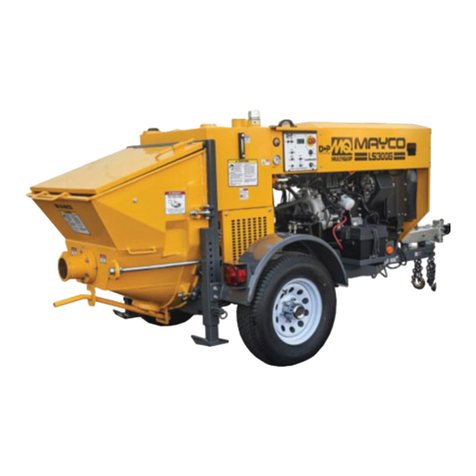
MULTIQUIP
MULTIQUIP MAYCO LS300P Operation manual
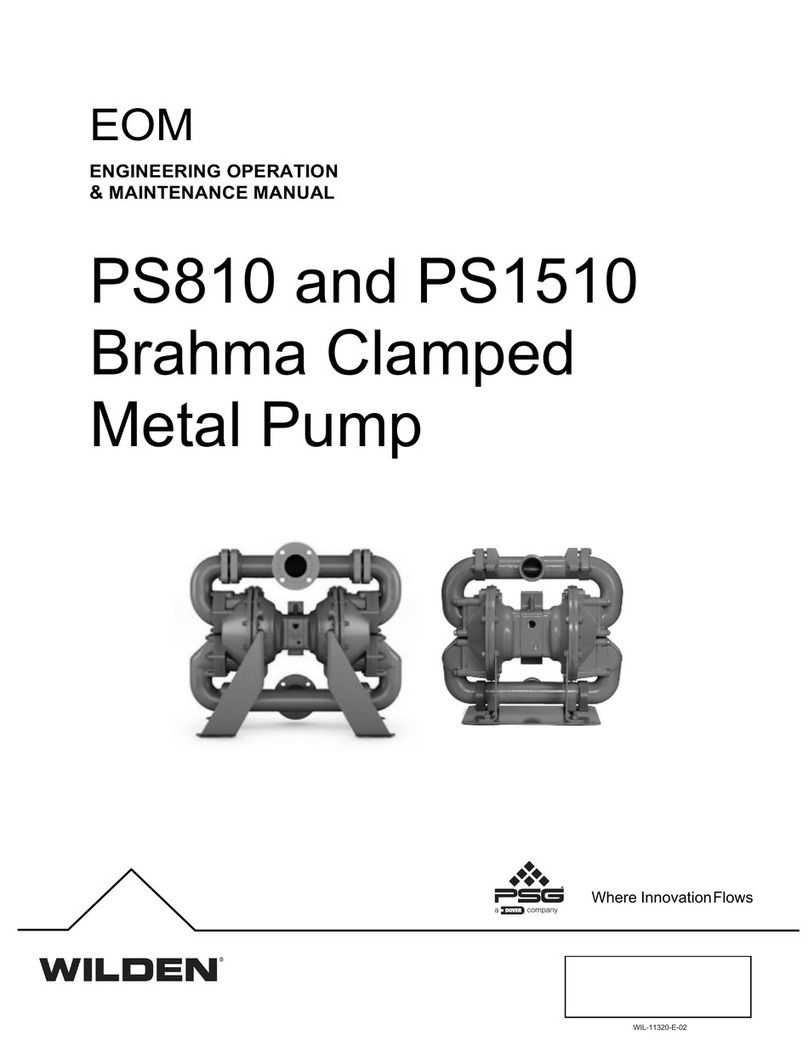
Dover
Dover PSG WILDEN PS810 Engineering, operation & maintenance

Bosch
Bosch 0 986 580 943 installation instructions
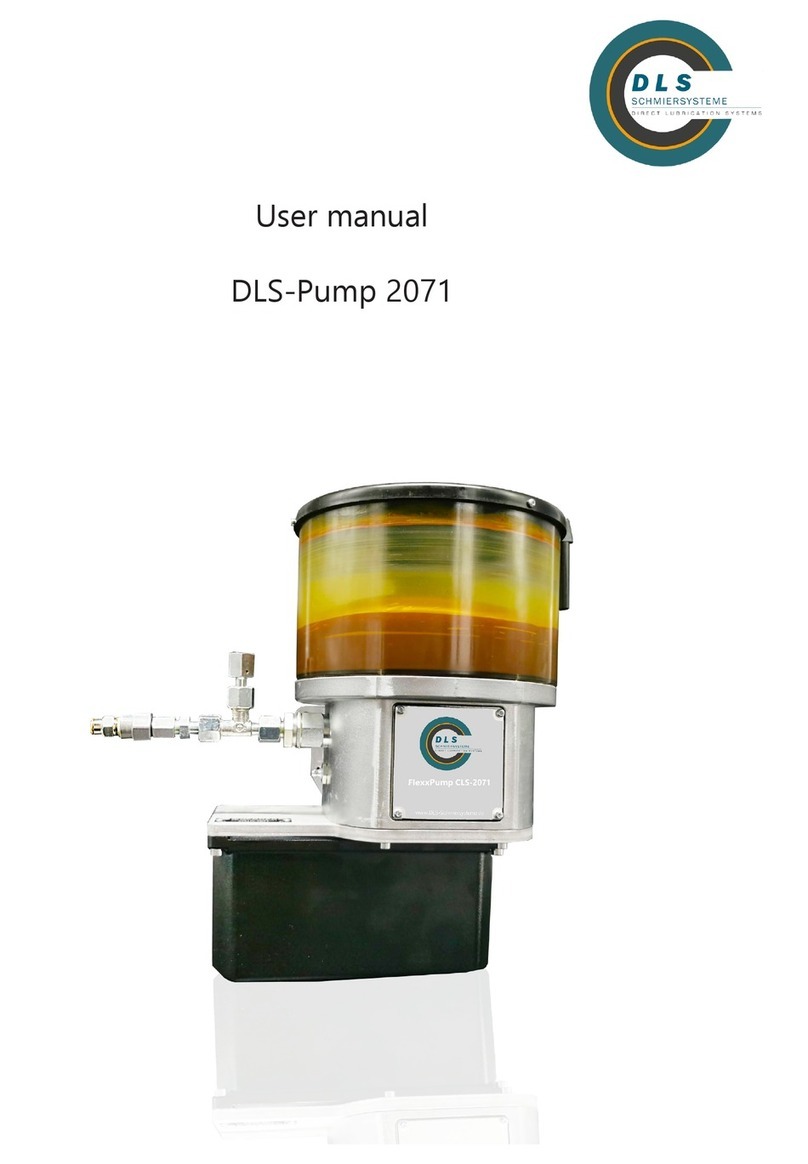
DLS
DLS DLS-Pump 2071 user manual
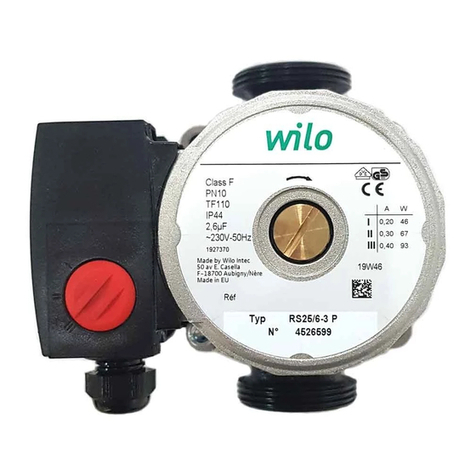
Wilo
Wilo RP Series Installation and maintenance instructions

Zehnder Pumpen
Zehnder Pumpen MICROBOY operating instructions
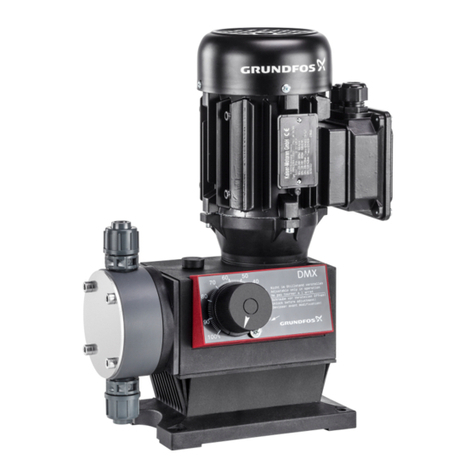
Grundfos
Grundfos DMX 221 Installation and operating instructions
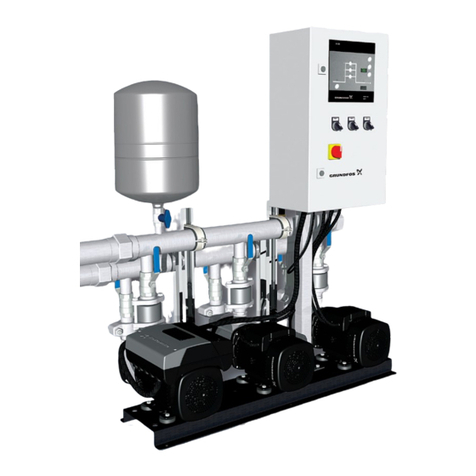
Grundfos
Grundfos Hydro Multi-B instructions
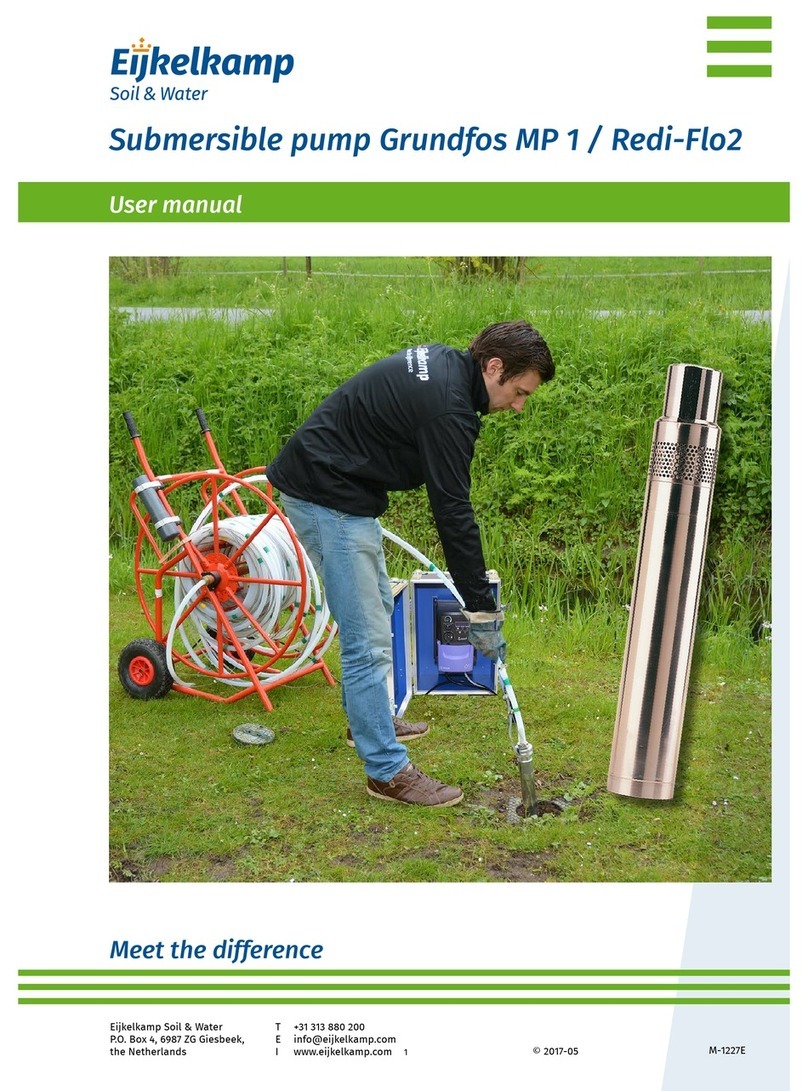
Grundfos
Grundfos MP 1 / Redi-Flo2 user manual
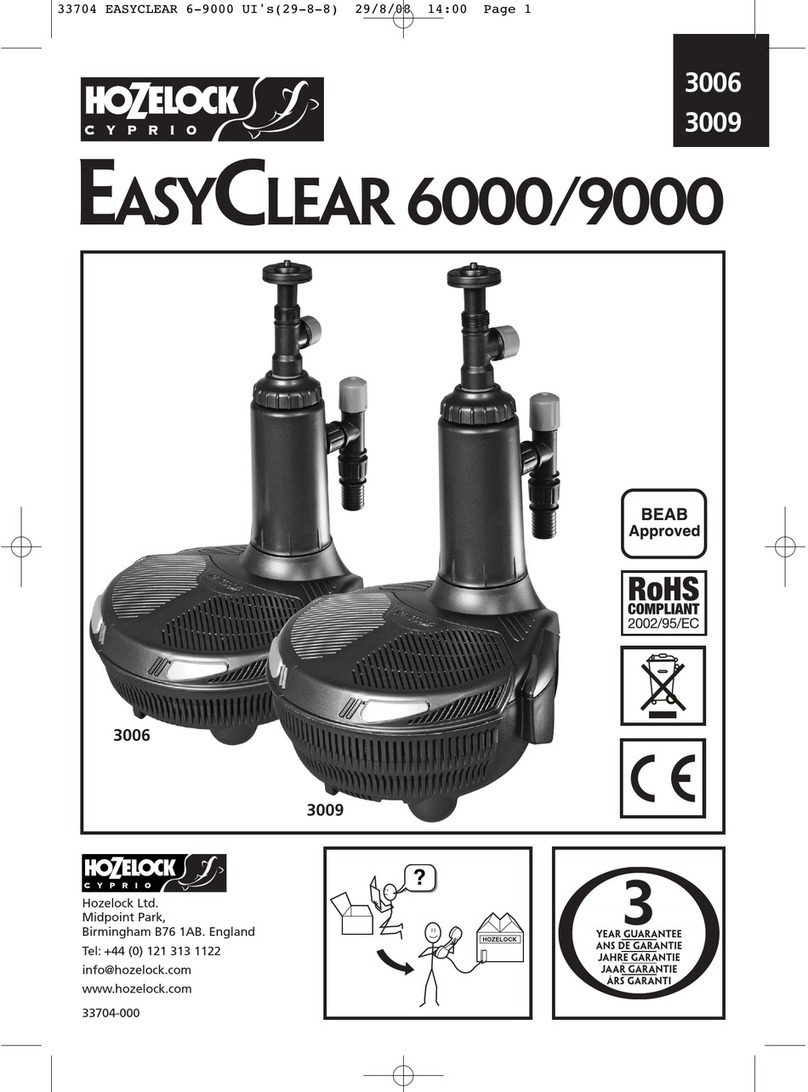
Hozelock Cyprio
Hozelock Cyprio EasyClear 9000 Installation and operating instructions
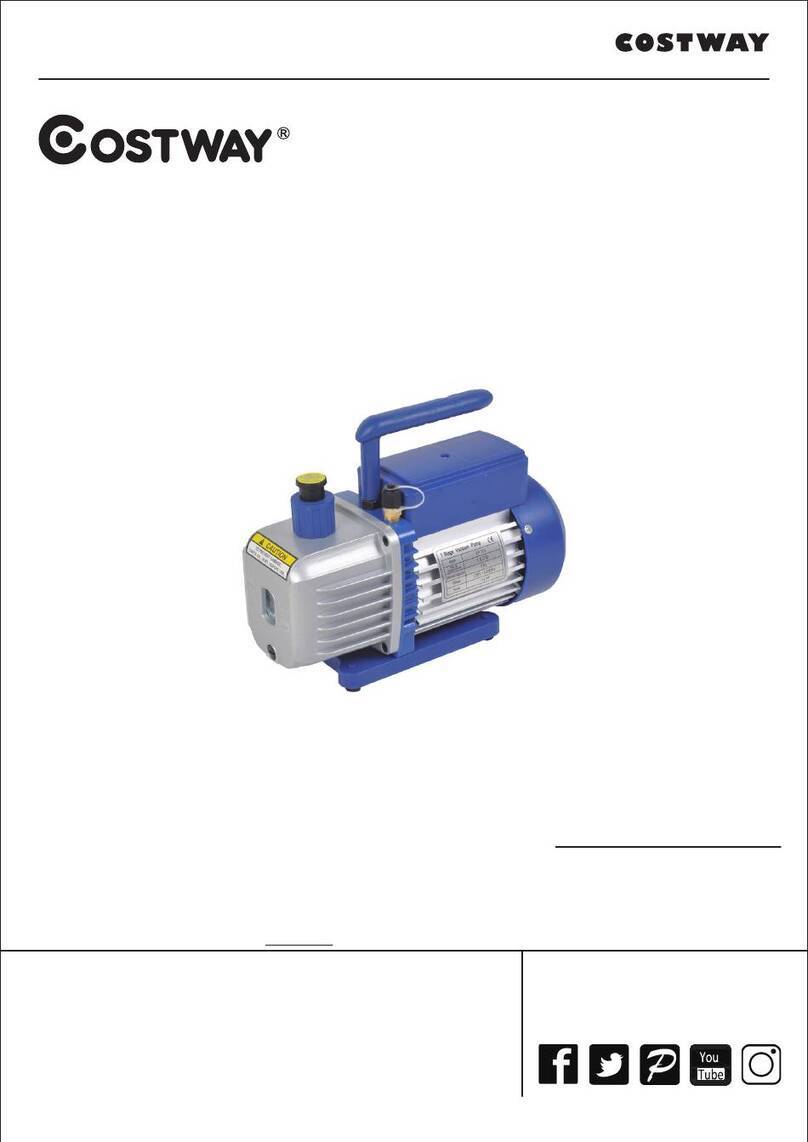
Costway
Costway ET1217 user manual
